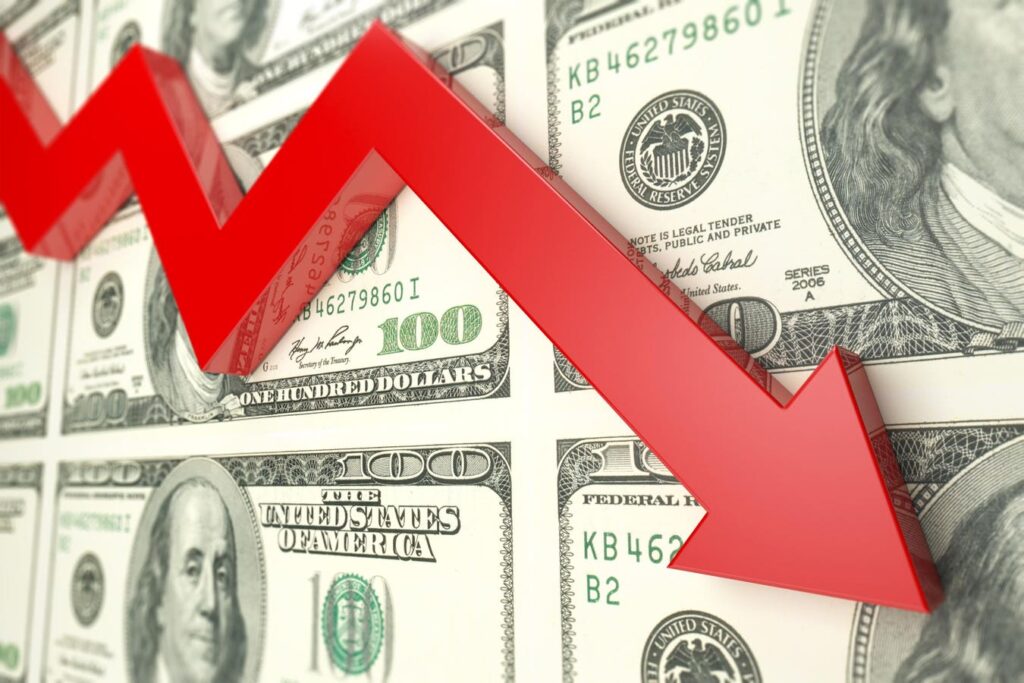For the past 16 years, the world has piled into a “long U.S.” trade. American stocks, bought with dollars, have propped up investment portfolios around the globe since the Great Financial Crisis.
From March 2009 to early 2025, the S&P 500 soared by 600%—that’s seven times! Why would anyone own anything else when SPDR S&P 500 ETF Trust (SPY) was sizzling?
But bulls don’t run forever. Last summer, we contrarians discussed a potential inflection point for SPY—the likelihood that the index’s best gains were behind it.
And here we are.
A global trade war has triggered a flight from SPY. The U.S. has increased its average tariff rate to 22%, the highest since 1910. The S&P 500 sits 16% below its highs from earlier this year and the dollar’s shed 10% from its recent peak—a crazy big move in a short amount of time for a currency.
Meanwhile, Fed Chair Jay Powell watches with detachment, to say the least. Last week he disappointed investors when he took the beloved “Fed put”—the implicit rescue by lower interest rates that investors have counted on since 1987—off the table.
While I don’t believe the Fed put is ever off the table, I do believe Powell’s strike price may very well be at much lower levels. (S&P 4000 or lower, perhaps?) Powell has reiterated that inflation remains priority number one, which means he is prepared to watch the market drop more.
Inflation though is likely to remain an issue as long as China—America’s main supplier—is tariffed at 145%. While levies may be mildly deflationary at lower levels (because they reduce economic activity), the tariffs on China are obviously inflationary. Just look at inflation-fearing hordes swarming Apple Stores across the nation!
The downward spiraling SPY, by the way, is worse for international investors than for you and me. We see an index 16% off its highs. They have a position down 16% plus the 10% drop in currency they used—a double whammy!
In this environment, bonds, at a glance, seem like the best option. But if a recession looms, we want to skew towards safe credit like US Treasuries. And even here, we need to be careful!
China—ye of 145% levies—owns $760 billion in long-term Treasuries. They will not be adding to their position and on a testy day they may mess with Trump and sell a bunch. Two weeks ago we saw serious selling in Asia’s overnight session that led to Trump’s tariff pause the following day.
Which is why the “short end”—shorter duration bonds—of the yield curve is safer right now. It is insulated from overseas sales because these yields key off the Fed Funds Rate.
When the Fed begins to cut again, these divvies will decline, so this may be the “last call” to find safety and yields up to 4.8%. Last week we featured five safe bond funds and readers asked for more ideas. So, this week, we are moving farther out the yield curve to focus on durations between 1 and 3 years on average.
6 Safe Bond Funds
The bonds owned by these funds are still generally protected from a Chinese fire sale of US Treasuries. And if the Fed cuts, these six yields will stay higher for longer than their ultra-short brethren:
iShares 1-5 Year Investment Grade Corp Bond ETF (IGSB) yields 4.8% via short-term (2.7 years, on average) investment-grade bonds. It offers a bit more income than shorter-term Treasuries. Its high-quality paper should be safe in a garden-variety recession.
iShares Core 1-5 Year USB Bond ETF (ISTB) blends short-duration US government and corporate bonds. It pays 4.4% and is even safer than IGSB thanks to our global printing press backing the US-portion of this portfolio.
iShares Short Maturity Bond ETF (NEAR) invests in short-term corporate bonds. Its 2-year duration is reasonable. NEAR yields 4.5%.
Vanguard Short-Term Bond ETF (BSV) yields 4.1%, on the lower end of our group, thanks to its blend of short-term Treasuries with corporates. Its 2.8-year duration brings more rate sensitivity but also a bit more potential upside for those inclined.
Schwab Short-Term US Treasury ETF (SCHO) yields 4.0% and only owns short-term Treasuries. For those concerned with the potential of a 2008 sequel, this fund combines generous liquidity and security to hedge against an ugly financial scenario.
iShares 1-3 Year Treasury Bond ETF (SHY) is right there with SCHO with a focus on Uncle Sam’s short-term paper. Its average duration is 1.9 years and the fund yields 3.8%.
Brett Owens is Chief Investment Strategist for Contrarian Outlook. For more great income ideas, get your free copy his latest special report: How to Live off Huge Monthly Dividends (up to 8.7%) — Practically Forever.
Disclosure: none
Read the full article here


